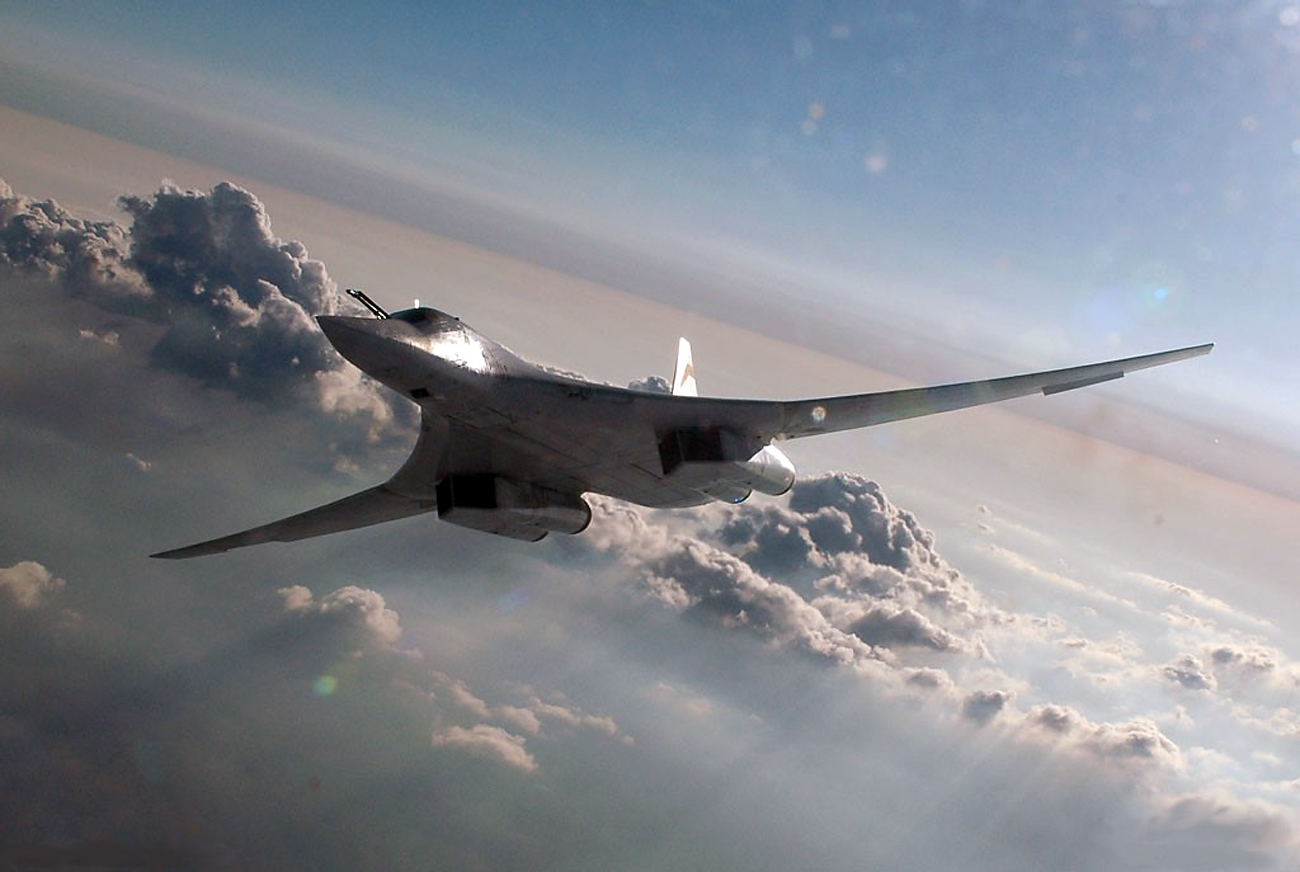
Tu-160.
Press PhotoThe Russian Defence Ministry will get the first delivery of renewed NK-32 engines for the Tu-160M2 strategic missile-carrying bombers at the end of 2016. The developers of the engine said the new engine would help the plane fly up to the stratosphere, at an altitude of 60,000 feet.
"The new NK-32 version can work not only as a reactive plane engine but also as a rocket engine. Thanks to this, the Tu-160M2 will be able to cruise at a height where no enemy anti-aircraft system can strike it," said a source at the Russian defence industry.
The first flight of the modernized plane will take place in 2018.
Viktor Bondarev, the Russian air force chief said the Defence Ministry plans to buy around 50 Tu-160M2 planes.
Serial construction of the aircraft will begin in 2021.
Russia is currently working on building new-generation strategic bombers, the PAK DA (an acronym for “prospective aviation complex for long-range aviation”), the development of which has however been delayed. The first unit will appear only sometime between 2020 and 2025.
"The Russian Aerospace Forces Command is now creating a "medium-term" substitute for the PAK DA. A series of long-range aircraft will soon finish their alert missions and it will be necessary to conduct a planned substitution of the technology with new armed planes," explained Dmitry Litovkin, military analyst at the daily newspaper Izvestiya.
A source in the defence industry told RIR the project could become the most expensive programme in the Defence Ministry in the 2020s. The cost is comparable to the construction of new nuclear submarines from the Borei series, which carry the Bulava missiles; between five and seven billion dollars.
Military experts said the Tu-160M2 would be used not only as a deterrent weapon but also to meet the Defence Ministry’s current challenges.
"The word 'missile-carrier' emphasizes the bomber's capability to use both nuclear and non-nuclear winged missiles. Among them are the H-101 and H-555 new-generation long-range winged missiles," said Pyotr Dainekin, former commander of the Russian air force and a Hero of Russia.
He added that the plane would also be capable of carrying the H-55SM winged missile with programmed coordinates for striking targets on the ground.
"The Tu-160 can be equipped with any type of nuclear and ordinary bombs: armour-piercing, concrete-piercing, cluster, naval mines, and so on. The total weight of the warheads can reach 40 tons," said Dainekin.
The new plane, he added, would be able to hit potential targets while outside the area that existing anti-aircraft or missile defence systems are capable of striking.
All rights reserved by Rossiyskaya Gazeta.
Subscribe
to our newsletter!
Get the week's best stories straight to your inbox